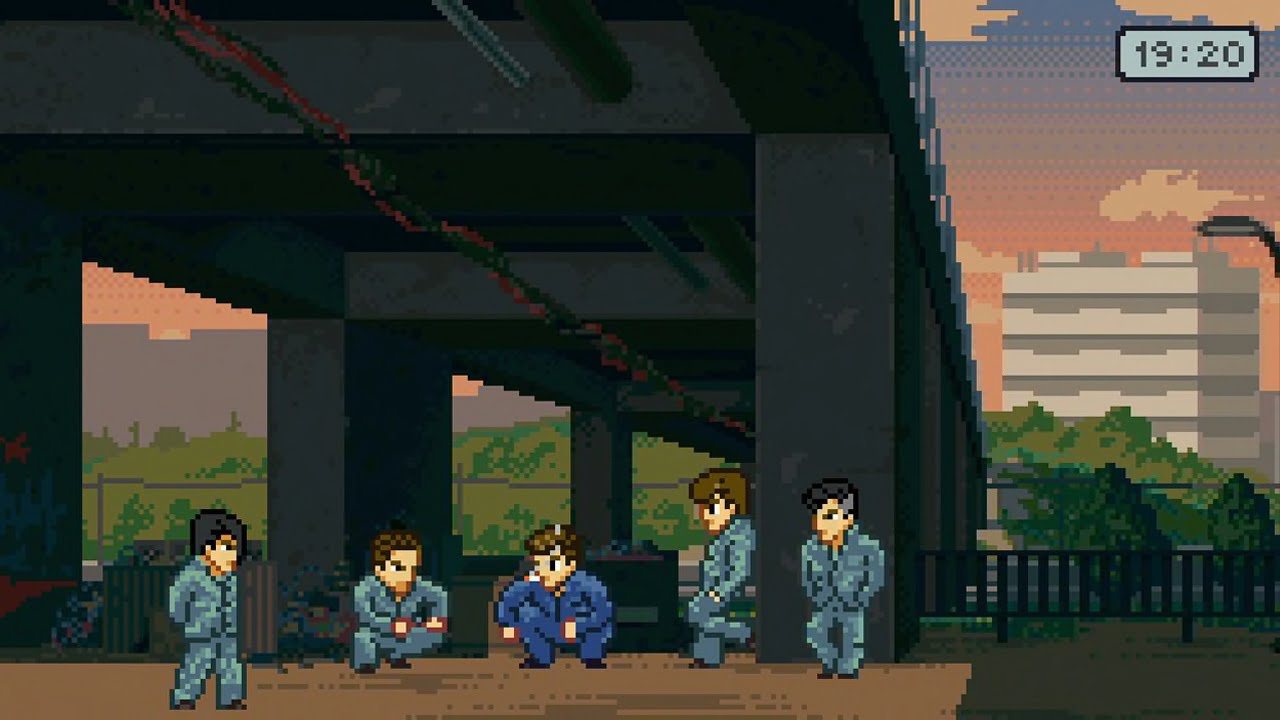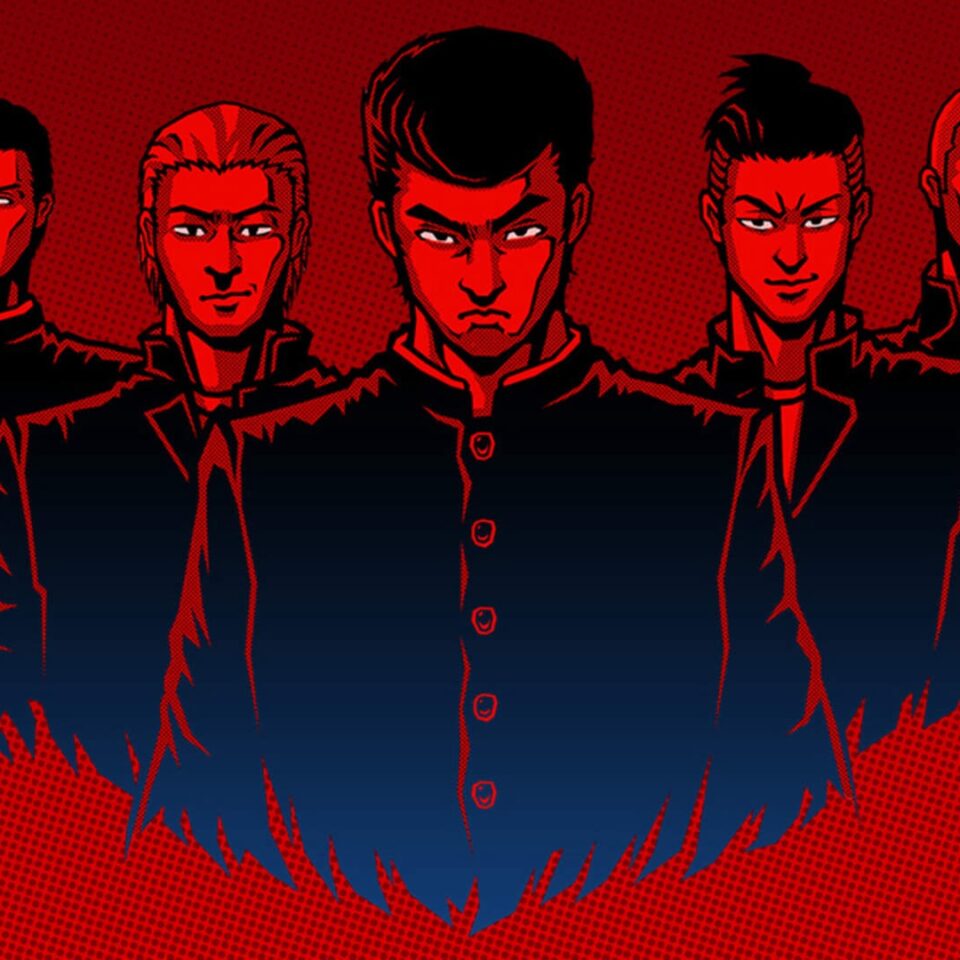As The friends of Ringo Ishikawa arrives on Xbox, we speak to the game’s creator about its development and themes.
The friends of Ringo Ishikawa is described by its creator – the Russia-based yeo – as an “existential open world beat ‘em up”. The game was first released on PC in 2018, coming to Nintendo Switch a year later. It’s now available on Xbox One and Xbox Series X|S.
To mark the release, we spoke to yeo about the game’s themes, the structure of open-world experiences, and his love for Final Fantasy VII.
The friends of Ringo Ishikawa features a mix of gameplay genres – brawling, role-playing, open-world exploration – but it doesn’t give the player much guidance or even a map. Why did you decide to leave so much of the game unexplained?
I think that most games we think of as sandbox or open-world are the same old linear experiences. In Grand Theft Auto, for example, you still have a linear story to follow, and the only freedom you have is to put the story on pause and invest your time in side quests. In this sense, Final Fantasy VII is also a free open-world game, or any other JRPG.
So basically, if you have side quests and can pause the main story, a game becomes “open-game,” but it’s just an illusion.
The same with Ringo. I wrote Ringo’s story keeping advice for writing movie screenplays in mind. If you take all the story scenes one by one, you see a three-act movie script with two turning points and a culmination. The trick is that you don’t have the usual “continue the main story quest” icon on the map – like in almost all modern games – so you can’t pause the story and feel more like the story “happens”.
I wanted to remove some game elements that break the “living in the game’s world” experience. As a player, that’s what I like games the most for. To be able to live in their world. So the experiment was to enhance this feeling.
Then I wanted players to explore the game. I thought that the game should be fun enough with the basic knowledge that you can fight and go to school, and every other options and feature they find on their own will add fun and a feeling of discovery. So I taught players to go to school and fight in the first 10-15 minutes of the game. Tutorial messages don’t pop up, but the tutorial is there. You fall asleep after two first in-game hours, and the game forces you to sleep in your house. Then it forces you to go to school by means of a cutscene. But after that, you are free to do any side activity you want and wait for the main story to continue. So it’s the same GTA structure, but you just don’t know how to move the story forward. The system has its pros and cons, of course. But it has one “pro” that matters most.
I try to design games where the actual gaming experience reflects the main hero’s mentality and feelings. Ringo is a person at a crossroads who doesn’t know what to do with his life, so I tried to grow this feeling in players. And many design choices were made because of that.
One of the other interesting challenges was to make a player join Ringo’s friends by their own will because you need to spend time with friends to start care for them, so the ending will resonate with you. That’s why I designed the battle system in a way that it’s very hard to win fights playing solo Ringo at the first half of a game (and on the contrary, it’s more fun in the latter part of the game when I need players to feel more lonely). You have to gather your friends if you want to win. Secondly, there’re some mini-games like ping pong, which can be played only with a friend. And other mini-games and activities were designed to be more fun when you do them with friends. Even watching a movie feels different with a buddy around.
The main problem with open-world games is that you can’t predict the pace players will go through a story and the way they will spend their time besides the main story. So it’s impossible to make the same experience for every player. Player feedback says that many of them played it “right”.

I can see the influence of games like River City Ransom, Earthbound, Double Dragon, Bully, and Shenmue. Where these games an inspiration? And have any other artists informed your approach to design and storytelling?
I played Earthbound for less than an hour because I don’t like the aesthetics. But the other games are my favourite ones, so, of course, they were an inspiration. I can’t really highlight specific authors who formed my approach to design and storytelling because there are so many of them, but if I have to name one, it is Yoshinori Kitase and Final Fantasy VII. It’s a perfectly designed game, and everybody can learn from it in all aspects such as story pacing, open-world, grinding, and battles.
Although The friends of Ringo Ishikawa is set in Japan, its themes feel universal. Do the events of the game reflect your own childhood?
I think that every person has seen almost every human type in their school days. There was The Alpha, The Beauty, The Rebel and so on. Also, small societies have more in common than larger societies. I mean that democratic and communistic societies are different, but if we go to specific small societies – like delinquents, or children, or scientists – they have more in common despite big political systems. So a school class is a school class almost everywhere. And questions like “Who am I?” “What am I here for?” “How to live life right?” are universal for every human. I didn’t touch on specific Japanese school themes because I’m not Japanese and I can’t go deep there, but universal themes are themes that everybody can relate to and understand.
I try to speak about things I have experienced and know, so the game reflects my childhood very much, and that’s why I can be accurate with the details. It’s a problem I faced in my later games, Arrest of a stone Buddha and my current yakuza game. I wasn’t a yakuza, I wasn’t in any organized crime group, and wasn’t a killer. I can speak about the universal themes I experienced, but details of a setting will be common, I can’t tell something interesting or insightful to a player in that respect.
For example, Arrest of a stone Buddha reflects my experience of having “a dream job you have a talent for.” Unfortunately, I couldn’t make players see the killer as a man with an interesting job he’s good at. I was afraid about it when I developed the idea, and sadly the fear was justified. But the game is hard to get into in any case, but I love it and see it as my best game so far.
The friends of Ringo Ishikawa balances delinquency and violence with the simple pleasures of everyday life, like playing ping-pong with your friends. It’s a technique you also use in Arrest of a stone Buddha. Can you explain this approach and how it helps to create character and atmosphere?
Arrest of a stone Buddha has a simple structure. You have an action part, which was supposed to be fun for players and not hard or repetitive). And you have a peace part, which you should want to skip to return to the fun part, but have to bear with. I also wanted players to feel the social isolation of the protagonist, so you can’t really talk with anybody and every action is futile. You just spend your time waiting for a new job. I was afraid that the dull part would be too dull but I wasn’t ready that players won’t enjoy the action.
Still, Arrest has no flaws for me because there are no unnecessary elements that don’t work for the idea. And as a player, I enjoyed (and still enjoy it) very much.

Untitled Goose Game received lots of attention for having a ‘honk’ button. I think the ‘smoke cigarette’ button in The friends of Ringo Ishikawa is just as clever and defines Ringo’s character. What was your intention with this action?
I don’t really remember why I did it. I always loved smoking for its aesthetics, and I have many relatives around me smoking from my childhood. My dad, mom, grandma, uncles, everybody smoked. Not to mention cinema where every tough hero smoked like a chimney. I personally quit smoking at 31 when my daughter was born, but I still love to see other people smoking. I think it’s really beautiful. So I just added this action because I liked it.
I always thought that it’s cool when you have this “personal” motion you do just for style. Like Rocky, in the first movie, bounces the ball on the streets. I wanted players to have this “style” motion as well. When there was a character creation in Ringo, the player could choose this action. Besides smoking, there was tossing a coin and playing with a ball (like Rocky). I stayed only with smoking, and you can toss a coin in locations where you can’t smoke.
And I sacrificed a whole button for this because it should have been a common and easy action you do (like with real smoking, which you do almost automatically).
I read that your father helped with Ringo by tracing hundreds of its animations. What does he think of the finished game?
I don’t really know. I think he loves it because it’s us who made it, but he never spoke about any aspect in particular. After seeing that players don’t hate the animations, he said with pride: “So my animations didn’t ruin your game.” When I show him any other pixel game, he says, “I don’t know, I can’t really tell, but our game is better, I think.”

Were there any specific challenges in bringing The friends of Ringo Ishikawa to Xbox?
No, everything wasn’t really hard. It’s just the type of work I can’t stand most, and it drains my energy very fast. I start to read some instructions and on the fourth step it goes wrong, and the instruction doesn’t tell what to do in this case. So you have to ask friends or write to the support team, and they answer after a week, and you try their solution and it doesn’t work, and you write again… So it takes time if something goes wrong, and it goes wrong quite often.
Players have responded positively to the way The friends of Ringo Ishikawa explores the emotions of adolescence. What do you make of the feedback?
I’m totally satisfied with the feedback. And I want to thank all players who sent me all kind words about the game and how they felt about it. It’s really heartwarming. Thank you very much!
–
The friends of Ringo Ishikawa is available now on PC, Nintendo Switch, and Xbox consoles. Arrest of the Stone Buddha is available on PC and Nintendo Switch.
For more interviews, features, and opinion, follow Thumbsticks on Facebook, Twitter, Flipboard, and YouTube.






